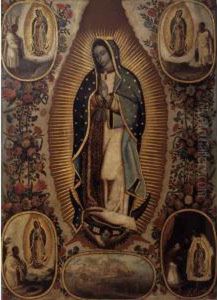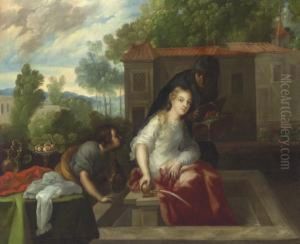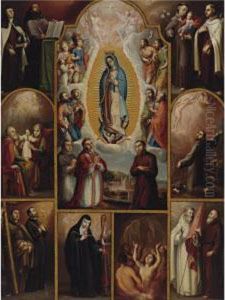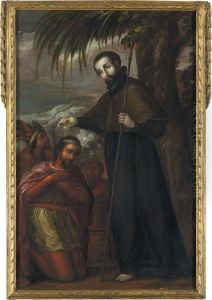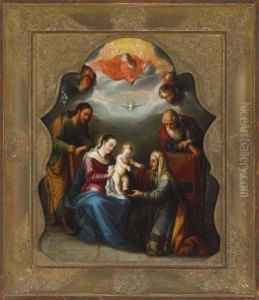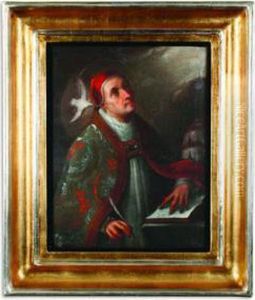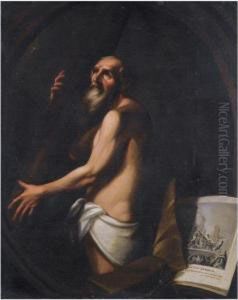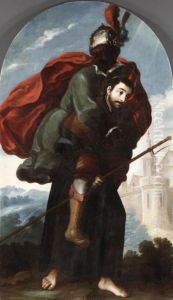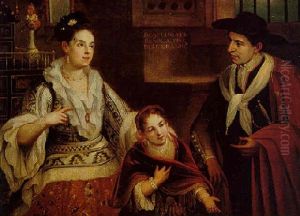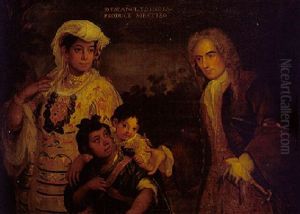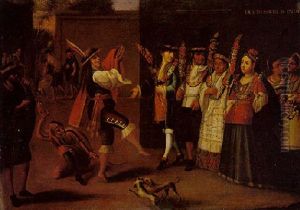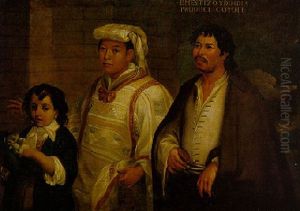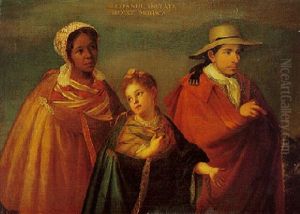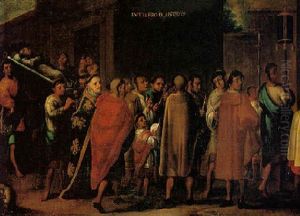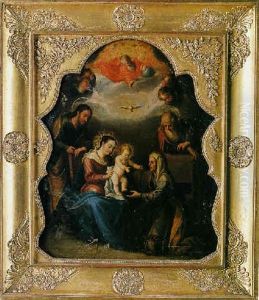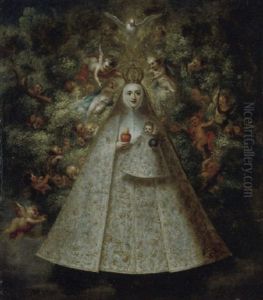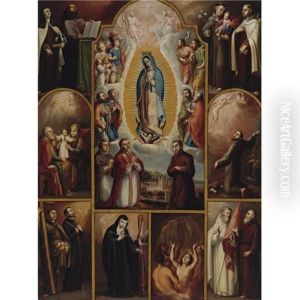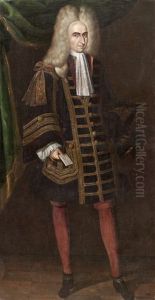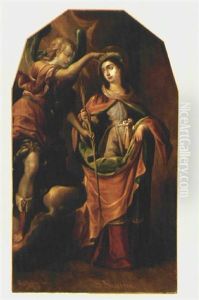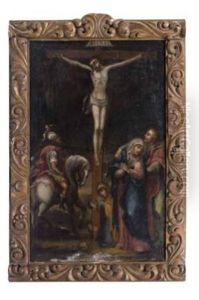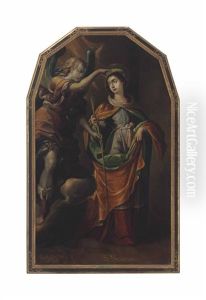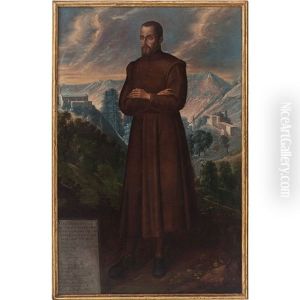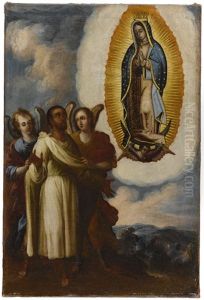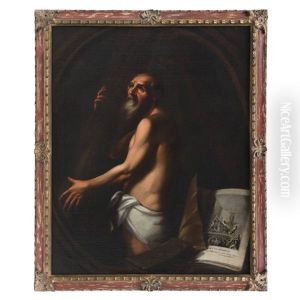Juan Rodriguez Juarez Paintings
Juan Rodríguez Juárez was a prominent Mexican painter and member of the prominent Rodríguez Juárez/Cabrera family of painters during the colonial period in Mexico. He was born in 1675 into a family with a strong artistic tradition. His grandfather, José Juárez, and his great-uncle, Luis Juárez, were both well-known painters of the time, and his brother, Nicolás Rodríguez Juárez, was also a painter. This familial connection provided Juan with a rich environment for artistic development.
Juan Rodríguez Juárez became an active artist in the late 17th and early 18th centuries, a period in Mexican art history known as the Baroque period. He was significantly influenced by the European Baroque style, which was characterized by dramatic expression, rich coloration, and bold contrast in light and shadow. However, Rodríguez Juárez, like other artists of New Spain (colonial Mexico), infused his works with local elements, blending European techniques with indigenous themes and iconography.
Throughout his career, Rodríguez Juárez produced a variety of works including religious paintings, portraits, and altarpieces. His art was commissioned by both the church and wealthy patrons, reflecting the colonial society's demand for religious iconography and the prestige associated with portraitures. He became one of the most sought-after artists of his time in Mexico City and held the position of master painter.
Juan Rodríguez Juárez's style evolved over time, and he is known for transitioning from the tenebrist style, which emphasized dark and dramatic lighting, to a lighter and more colorful palette towards the end of his career. This change reflected the transition from the Habsburg to the Bourbon monarchy in Spain, which brought about a shift towards French Rococo influences in the arts throughout the Spanish Empire.
Juan Rodríguez Juárez's contributions to Mexican art were significant as he was part of a lineage that helped to define the visual culture of Mexico in the colonial period. His works are considered an integral part of the Mexican Baroque movement and continue to be studied for their aesthetic qualities and historical context. Rodríguez Juárez passed away in 1728, leaving behind a legacy as one of the leading figures in the artistic community of New Spain.
